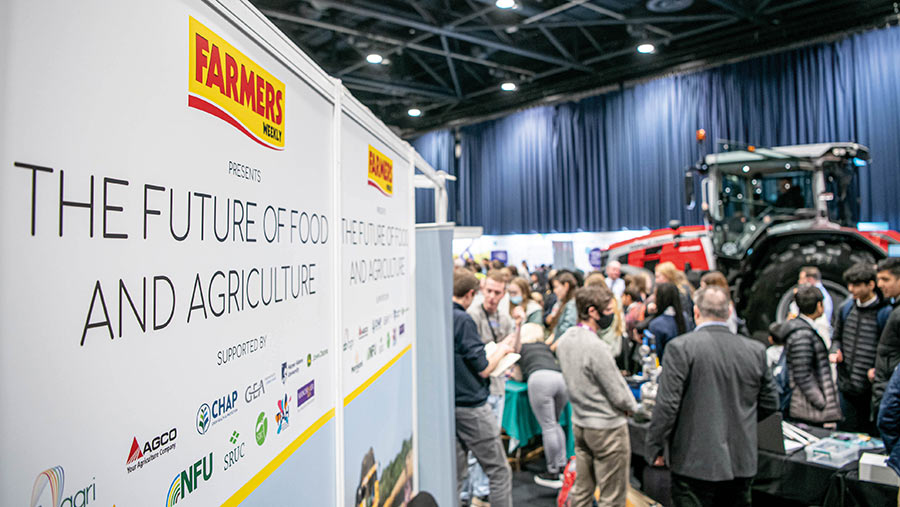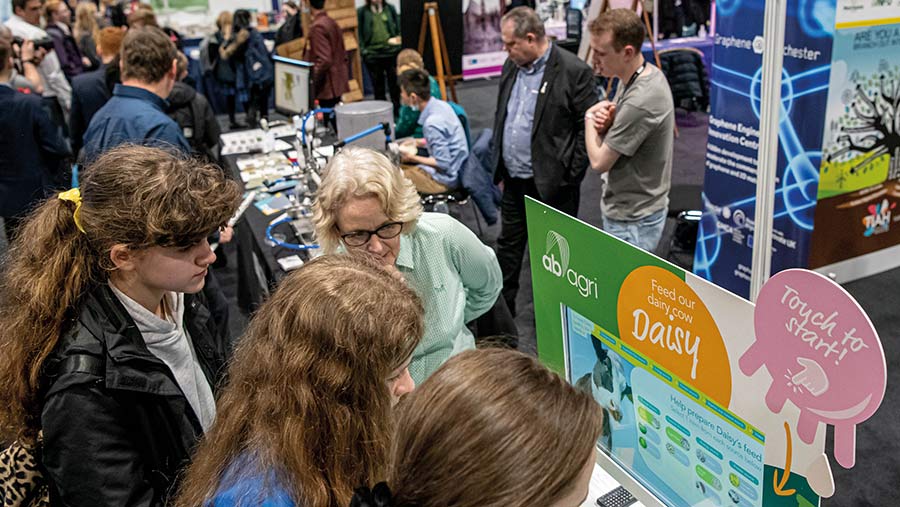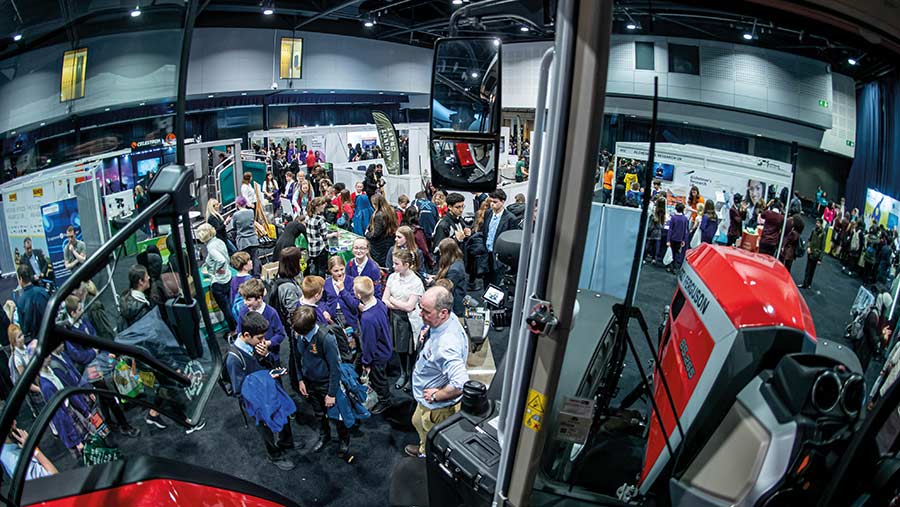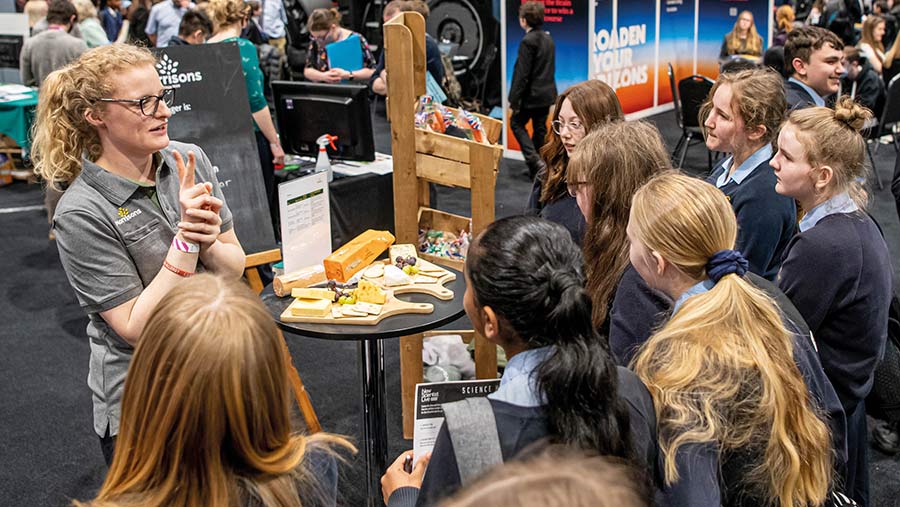Food industry unites to attract talent of tomorrow
 © Telling Photography
© Telling Photography Banishing farming’s reputation as a closed shop and linking the mission of tackling climate change will be key to attracting the next generation into the industry, farm employers and academics have said.
Representatives from across the food supply chain, supported by Farmers Weekly, met thousands of visitors, including schoolchildren, at New Scientist Live Manchester last month to help push the sector to the top of list of jobs they aspire to.
The event, designed to inspire people to pursue jobs in science, technology, engineering and mathematics (Stem) showcased careers in agriculture alongside other sectors such as astronomy, medicine and energy.
The first two days were open to all, then on day three, the event was exclusively for schools.
Farmers Weekly was joined on its stand by key industry partners, all aiming to help farming shed the perception that it has limited opportunities for progression and only offers traditional husbandry roles.
See also: Getting into dairy farming: Options for new entrants
Watch the video to find out about the event last month and read the rest of the report below.
Employment crisis
MPs have warned that UK agriculture faces permanent shrinkage unless the government acts quickly to address the acute labour shortages being felt throughout the supply chain.
Last year there were an estimated 500,000 vacancies out of 4.1m roles in the food and farming sector, according to the Commons’ Environment, Food and Rural Affairs committee.
It said this was caused by Brexit and accentuated by the coronavirus pandemic.
See also: Farm apprenticeships: Everything you need to know
More than one-third of agricultural businesses are still struggling with labour absences as a result of the pandemic, according to separate research published by Virgin Money.
While there are calls from businesses for short-term solutions to this acute crisis, long-term signs that the food industry will be able to attract good talent are more encouraging, although there is more work to be done, experts say.
A survey of schoolchildren at the event, by the Institute for Agriculture and Horticulture (Tiah), revealed that 90% agree farming involves the use of science, technology, engineering and maths skills.
Finding the influencers
Tess Howe, membership and business development manager at Tiah, said that inspiring children was only the first step to bringing them into the industry.
“It’s key to connect with the influencers,” she said. “Parents and careers advisers are as important, if not more, than children.”
This can simply mean flagging up jobs in the industry that people without links to the sector may not have even realised existed, as well as highlighting the likely future jobs that will be needed as the industry becomes more high-tech.
Tiah will shortly publish the results of a major study that looks in more detail at what is holding people back from pursuing careers in farming.

© Telling Photography
Bolstering the visibility of farming careers is just one part of the remit of Tiah, a newly formed organisation funded by Defra and backed by farming organisations.
It aims to be the home of skills, careers and professionalism in agriculture, from recruitment right through to retirement, and will hopefully be a resource that some educators feel is currently missing.
Schools perspective
Nina Conlon, a science teacher at Salford’s Buile Hill Academy, said that farming organisations would be pushing on an open door if they wanted to help pupils in urban schools like hers learn more about the industry.
“In terms of them relating [Stem careers] to the farming industry, I think it’s quite blocked off. I don’t think there’s that hinterland link that they need and should have,” she said.
“A lot of students have massive goals for the environment, and climate change – even air pollution. In terms of farming, I don’t think they see that link between the two.”
Bringing students along to New Scientist Live had helped them begin to bridge that gap, she said, with some of the higher education exhibitors choosing to focus on how they were helping tackle these types of problems.
Soil focus
Holly Langridge, a research technician from the University of Manchester’s Soil and Ecosystem Ecology Lab, was part of a team helping children peer into microscopes at the host of tiny organisms living inside a sample of soil.
“It is about getting them to understand that soil is not just dead dirt,” she said, noting that the ground in many countries is becoming less agriculturally productive.
“We’ll need more soil scientists because agriculture and growing food will become harder due to climate change, so we need more people doing research to mitigate that complexity,” she added.

© Telling Photography
At the other end of the size spectrum on the Future of Food & Agriculture exhibit was a Massey Ferguson 8S 265 tractor, which featured in a stream of selfies throughout the day, and no doubt encouraged a few visitors to think about becoming agricultural mechanics.
Richard Charles, aftersales training manager for UK and Ireland with Agco, said the dealer network is struggling to find the volume of technicians needed as the brand found it hard to attract applicants from a diverse enough range of backgrounds.
“We are perceived as a closed shop and quite a backwards industry in some cases,” he said. “We’re just trying to inspire the younger generation that agriculture is a viable career path and you don’t have to be a farmer just to be into the industry,” he added.
“Nearly every kid loves a tractor at a young age. We’ve just got to continue that and keep reminding them how wonderful those products are.”
Food for thought
Further along the supply chain, Morrisons, which spends £900m annually with British farmers, was also in attendance.
Sophie Jenkinson, who works in the agriculture, fisheries and sustainable sourcing team, says it’s vital to help educate kids about where there food comes from as a first step to attracting them into the sector.
“We need some new blood in the industry – the average age of a farmer is only going one way and unfortunately it’s up.”
The company’s cheese-focused exhibit was a great conversation starter about all the roles needed between farm gate and kitchen plate, she said, with children fascinated to learn all about how the product was made.

© Telling Photography
Yet as well as bringing children closer to agriculture, the sector also needed to meet them halfway and adapt to changing expectations, said James Vaughan and Simon Armstrong from dairy equipment manufacturer GEA Farm Technology.
They had brought along a robot milker to showcase engineering jobs in the sector, and particularly inspire children from non-farming backgrounds. “Our industry needs more and more young people, said Mr Vaughan.
“There is a lot of bad press in the industry, but there are really good jobs in agriculture – but they are well hidden.”
What is New Scientist Live?
New Scientist Live is the world’s biggest science and technology fair.
Its Manchester event saw 6,206 visitors, including schoolchildren, family members and teachers, pass through the doors to enjoy static and interactive exhibits with inspirational talks.
An estimated 3,000 more people attended online. The event will return to the ExCel in London from the 7-9 October.
